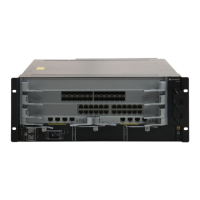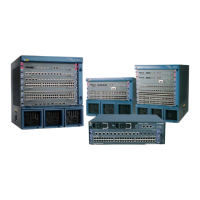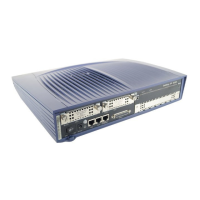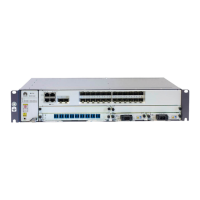Applicable Environment
When the bandwidth or the reliability of two devices should be increased and either of the two
devices does not support LACP, you should create an Eth-Trunk in manual load balancing mode
on Switches and add member interfaces to the Eth-Trunk to increase the bandwidth and improve
reliability of devices.
As shown in Figure 2-2, Eth-Trunks are created between SwitchA and SwitchB.
Figure 2-2 Networking diagram for configuring link aggregation in load balancing mode
SwitchA SwitchB
Eth-Trunk
Eth-Trunk 1 Eth-Trunk 1
Pre-configuration Tasks
Before configuring an Eth-Trunk in manual load balancing mode, complete the following tasks:
l Powering on the S7700
l Creating the Eth-Trunks
Data Preparation
To configure an Eth-Trunk in manual load balancing mode, you need the following data.
No.
Data
1 Number of the Eth-Trunk in manual load balancing mode
2 Type and number of the member interface
2.3.2 Configuring the Eth-Trunk to Work in Manual Load Balancing
Mode
Context
NOTE
Check whether the Eth-Trunk contains member interfaces before you configure the operation mode of the
Eth-Trunk. If the Eth-Trunk contains member interfaces, the operation mode of the Eth-Trunk cannot be
changed. To delete member interfaces from the Eth-Trunk, run the undo eth-trunk trunk-id command in
the interface view or run the undo trunkport interface-type interface-number command in the Eth-Trunk
view.
Do as follows on the S7700 where you need to configure an Eth-Trunk in manual load balancing
mode.
Quidway S7700 Smart Routing Switch
Configuration Guide - Ethernet 2 Link Aggregation Configuration
Issue 01 (2011-07-15) Huawei Proprietary and Confidential
Copyright © Huawei Technologies Co., Ltd.
20

